Eocene
Type of resources
Available actions
Topics
Keywords
Contact for the resource
Provided by
Years
Formats
Representation types
Update frequencies
-

The data is presented as relative abundances of all species encountered in 300 counts on standard light microscope smear slides. Counts are presented from 64 samples, ranging from sample U1510A 48X 1W 50-51 cm (435.90 m) to U1510A 52X CC 24 cm (478.09 m). A second dataset provides semi-quantitative data from the same samples, which includes species that were not encountered during the 300 count.
-
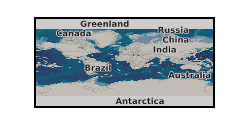
TEX86 sea surface temperature compilation for the Eocene epoch (56 to 34 million years ago). Also included are other GDGT-based indices which are used to flag potentially problematic SST estimates. The data accompanies Inglis et al. (2015; Palaeoceanography, v.30, p. 1000-1020) DOI: 10.1002/2014PA002723 Sheet 1: The fractional abundance of isoprenoidal GDGTs, TEX86 values and other related indices for new and published Oligocene and Eocene sediments (n.b. the fractional abundance of isoprenoidal GDGTs was unavailable for IODP Site 1356). Values with yellow shading are excluded from the TEX86 compilation used in Fig. 7-9. Values with red text are those with a Red Sea-type GDGT distribution (i.e. GDGTRS >30 %) and may overestimate SST. Sheet 2: Each TEX86H time-series was grouped into low- (<30 degrees) or high-latitude (>55 degrees) bins and translated into a relative temperature (Δ SST) by comparison to the warmest temperature in that time series and fitted with a non-parametric LOESS regression. Sheet 3: Sequential removal of one data series at a time (jackknifing) within the low-latitude compilation. Sheet 4: Same as above but within the high-latitude compilation. Samples were collected from a range of globally-distributed marine sediments. Either collected via DSDP, ODP, IODP or personal sampling expeditions.
-
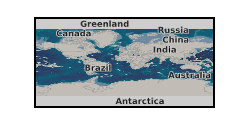
A set of climatological annual and monthly sea surface temperature and 1.5m air temperature for the Eocene Epoch as run in HadCM3L. The data also relates to NERC Grant NE/I006281/1
-

Carbon and oxygen isotopic composition of benthic foraminifera spanning the early and middle Eocene succession recovered from borehole 16/28-Sb01. For description of this sedimentary sequence see Haughton et al. 2005. Petroleum Geology: North-West Europe and Global Perspectives, Proceedings of the 6th Petroleum Geology Conference, 1077–1094.
-
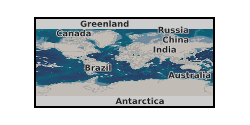
These data were produced within the objectives of the NERC grant (alongside collaborator Gibbs at NOC, Southampton) and predominantly comprise biometric data collected under light microscope at x1500 magnification from the coccolithophore taxon Coccolithus pelagicus, a heavily calcified taxon with a long fossil record. The data was collected as part of a collaborative research effort bringing together the modern and fossil consortia within the UK Ocean Acidification research programme. The data are from batch culture experiments on both modern sub-species of C. pelagicus and provide cell size, coccosphere size, coccolith size and number of coccoliths per cell. The same parameters were measured from C. pelagicus from North Atlantic field and sediment trap samples from inside and outside bloom conditions. Again, the same parameters were also measured from C. pelagicus from exceptionally well-preserved fossil material from several shelf and off-shelf marine locations including New Jersey, Tanzania, California and the Bay of Biscay.
-
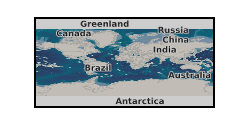
Two datasets containing multiple diversity metrics of planktonic foraminifera. Recent data is from MARGO (Multiproxy approach for the reconstruction of the glacial ocean surface); Eocene data is from NEPTUNE (a relational database of microfossil occurrence records from DSDP and ODP publications), supplemented by literature searches. These data are related to Fenton et al (2016) Phil Trans (DOI: 10.1098/rstb.2015.0224) Data used in Fenton et al (2016) Environmental predictors of diversity in Recent planktonic foraminifera as recorded in marine sediments. The original data is from the MARGO database (Kucera, 2007)
-
These files comprise lists of neogastropod species from the Early Cenozoic of Seymour Island, Antarctica and tropical counterparts in both the US Gulf Coast and Paris Basin. They comprise a key part of the raw data analysed in the paper Crame et al. (2018). For each of these three localities species are listed in taxonomic order, following conventional taxonomic notation. Faunas are listed for the Paleocene, Early Eocene and Middle Eocene time intervals for the two tropical localities, but only for the Paleocene and Middle Eocene of Antarctica. The accurate location of all the localities is given in a series of published papers. The Seymour Island samples were collected across three field seasons; 1999, 2006 and 2010. The US Gulf Coast and Paris Basin data were constructed from existing literature. Funding was provided by the NERC grants NE/I005803/1 and NE/C506399/1.
-
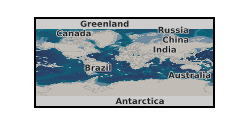
Supplementary material for published paper, Early Paleogene wildfires in peat-forming environments at Schoningen, Germany by BE Robson et al, http://doi.org/10.1016/j.palaeo.2015.07.016 NERC grant abstract: Human activity has led to an increase in pCO2 and methane levels from pre-industrial times to today. While the former increase is primarily due to fossil fuel burning, the increase in methane concentrations is more complex, reflecting not only direct human activity but also feedback mechanisms in the climate system related to temperature and hydrology-induced changes in methane emissions. To unravel these complex relationships, scientists are increasingly interrogating ancient climate systems. Similarly, one of the major challenges in palaeoclimate research is understanding the role of methane biogeochemistry in governing the climate of ice-free, high-pCO2 greenhouse worlds, such as during the early Paleogene (around 50Ma). The lack of proxies for methane concentrations is problematic, as methane emissions from wetlands are governed by precipitation and temperature, such that they could act as important positive or negative feedbacks on climate. In fact, the only estimates for past methane levels (pCH4) arise from our climate-biogeochemistry simulations wherein GCMs have driven the Sheffield dynamic vegetation model, from which methane fluxes have been derived. These suggest that Paleogene pCH4 could have been almost 6x modern pre-industrial levels, and such values would have had a radiative forcing effect nearly equivalent to a doubling of pCO2, an impact that could have been particularly dramatic during time intervals when CO2 levels were already much higher than today's. Thus, an improved understanding of Paleogene pCH4 is crucial to understanding both how biogeochemical processes operate on a warmer Earth and understanding the climate of this important interval in Earth history. We propose to improve, expand and interrogate those model results using improved soil biogeochemistry algorithms, conducting model sensitivity experiments and comparing our results to proxy records for methane cycling in ancient wetlands. The former will provide a better, process-orientated understanding of biogenic trace gas emissions, particularly the emissions of CH4, NOx and N2O. The sensitivity experiments will focus on varying pCO2 levels and manipulation of atmospheric parameters that dictate cloud formation; together, these experiments will constrain the uncertainty in our trace greenhouse gas estimates. To qualitatively test these models, we will quantify lipid biomarkers and determine their carbon isotopic compositions to estimate the size of past methanogenic and methanotrophic populations, and compare them to modern mires and Holocene peat. The final component of our project will be the determination of how these elevated methane (and other trace gas) concentrations served as a positive feedback on global warming. In combination our work will test the hypothesis that elevated pCO2, continental temperatures and precipitation during the Eocene greenhouse caused increased wetland GHG emissions and atmospheric concentrations with a significant feedback on climate, missing from most modelling studies to date. This work is crucial to our understanding of greenhouse climates but such an integrated approach is not being conducted anywhere else in the world; here, it is being led by international experts in organic geochemistry, climate, vegetation and atmospheric modelling, and palaeobotany and coal petrology. It will represent a major step forward in our understanding of ancient biogeochemical cycles as well as their potential response to future global warming.
-

The data include organic carbon and nitrogen abundances, carbon isotopes, nitrogen isotopes, major and trace element abundances, RockEval and mercury abundances from sedimentary strata across the Paleocene-Eocene thermal maximum. The samples include areas with hydrothermal influence linked to the emplacement of the North-Atlantic Igneous Province and others distal to hydrothermal activity to evaluate the effect of hydrothermal circulation on geochemical cycles. The results are linked to Rochelle-Bates et al. (in prep.) "Hydrothermal ammonium from a Large Igneous Province mitigated early Eocene climate change". * Note: U1568A Rockeval : Red filled cells highlight unreliable data with Tmax less than 350°C or greater than 450°C, or oxygen indices greater than 200.
-

Twenty-six 10 cm3 samples from DSDP (Deep Sea Drilling Project) Site 94, Core 15, sections 3 and 4 were examined at 10 cm-intervals (417.84-415.01 meters below seafloor [mbsf]). The sedimentary material was soaked in distilled water and washed under running water through a 63 µm sieve and oven dried at <40 degrees C. Samples were then re-washed and dried using the same method. Foraminifera are abundant and recystallised. Calcite precipitation is observed on microspherules in some samples. For each sample, a total of three foraminiferal species that correspond to different ecological habitats were selected for isotope analysis. Specimens of Pseudohastigerina micra and P. naguewichiensis were selected from the 125-250 µm size fraction and Turborotalia cocoaensis, and Cibicidoides eocaenus were selected from the >250 µm size fraction. Specimens that had infilling or showed heavy calcification were avoided. All foraminifera were ultrasonicated for 2 seconds prior to isotopic analyses. To track the number of impact microspherules across the sampled interval, we performed our own microspherules count from the >125 micron size fraction. Microtektites have not been distinguished from microkrystites in this study and thus all recovered spherules should be considered under the broader category of microspherules (both microtektites and crystalline-bearing microkrystites). We recovered a total of 4999 microspherules from the 26 samples. Microspherules are usually <1 mm in size, and occur primarily spherical, although ellipsoid, teardrop and dumbbell forms and fragments have also been found. In most samples the microspherules count is low <50 microspherules. We found a high abundance (>50 microspherules/10 cm3) between samples 15R/3/135-137 cm and 15R/3/89-91 cm (416.36 to 415.90 mbsf). Our peak concentration of microspherules at 15R/3/109-111 cm (416.10 mbsf), where 3395 microspherules were recovered, coincides with the younger of the two late Eocene impacts i.e., the North America microtektite horizon associated with the Chesapeake Bay impact.
 NERC Data Catalogue Service
NERC Data Catalogue Service